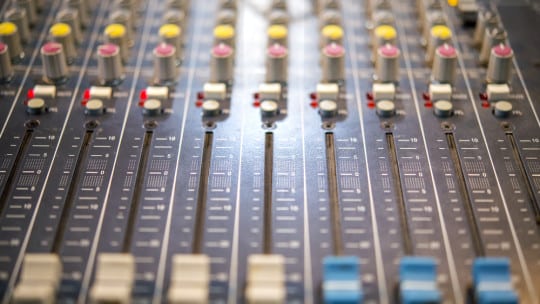
Pop quiz: What is the most overlooked and under-appreciated aspect of filmmaking? If you ask Andrew Whipp, the Emmy-award-winning senior creative & editor at Green Buzz Agency, he'll tell you it's sound. "It's been said many times: An audience can get used to mediocre cinematography but no one can sit through a piece with bad sound," he says.
Yet audio can be a thankless craft. When it's done well, Whipp observes, most people don't notice it. But placing emphasis on sound is a crucial part of telling the engaging stories you want to tell through video. That's one reason why Whipp and Tod Plotkin (founder of Green Buzz Agency) are bringing their expertise to the PR News Video Boot Camp, Dec. 6 at the National Press Club in Washington, D.C., to talk about bringing your videos to life through editing, sound and post-production.
For a glimpse into the expertise they'll be bringing to the audience, Whipp provided these five audio tips to PR News:
1. Always try to capture audio when you shoot B-roll. The natural ambiance that accompanies the audio in B-roll will help meld the visuals to the soundscape. This "ambiance," or what video editors call "texture," will help pull the viewer into the scene and make the visuals feel more dynamic and engaging.
2. When you can't capture audio during production, try using sound effects. There are hundreds of thousands of cheap sound effects on the internet at websites like audiojungle.com. Sound effects typically run a dollar or two, which is very cost-effective when you factor in how much stronger they make your story. If sound effects are added and mixed properly, the audience won't be able to tell they aren't authentic sounds from the day of the shoot. If you can't afford to spend any extra money, try recording your own sounds (foley).
3. Music isn't always the most important audio element in your story. Unless you're creating commercial content that is driven by a particular song (such as a jingle), music should just be a complementary element, one of many tools you have at your disposal to create impactful moments. Tip: Next time you're editing a piece, try editing a section of your video without having a music track laid down. Use the interviews, B-roll (with natural sound) and sound effects to guide your edits instead of relying on a song's beat to tell you where and when to cut. It's an awesome exercise that forces you to edit to the rhythm of the story, instead of the music. You'll usually find that when you go to put a track in after your edits have been made, the content feels more engaging and less predictable.
4. As powerful as music can be, silence can be even more impactful. There are many instances where a scene or a line of dialogue can be much more poignant if the viewer is forced to sit with the moment and reflect without any extra stimuli. Always make sure that you are adding music in for a reason, not just to fill out the soundscape.
5. It's really important to do a full audio mix on all of the elements in your soundscape before delivery to make sure there is nothing in the audio that sticks out. You want to avoid any abrupt, loud spikes in audio as well as elements that are too low to hear. This sounds simple but it is an often-neglected part of the wrap-up process.
Register for the PR News Video Boot Camp
Follow Ian on Twitter: @ianwright0101
